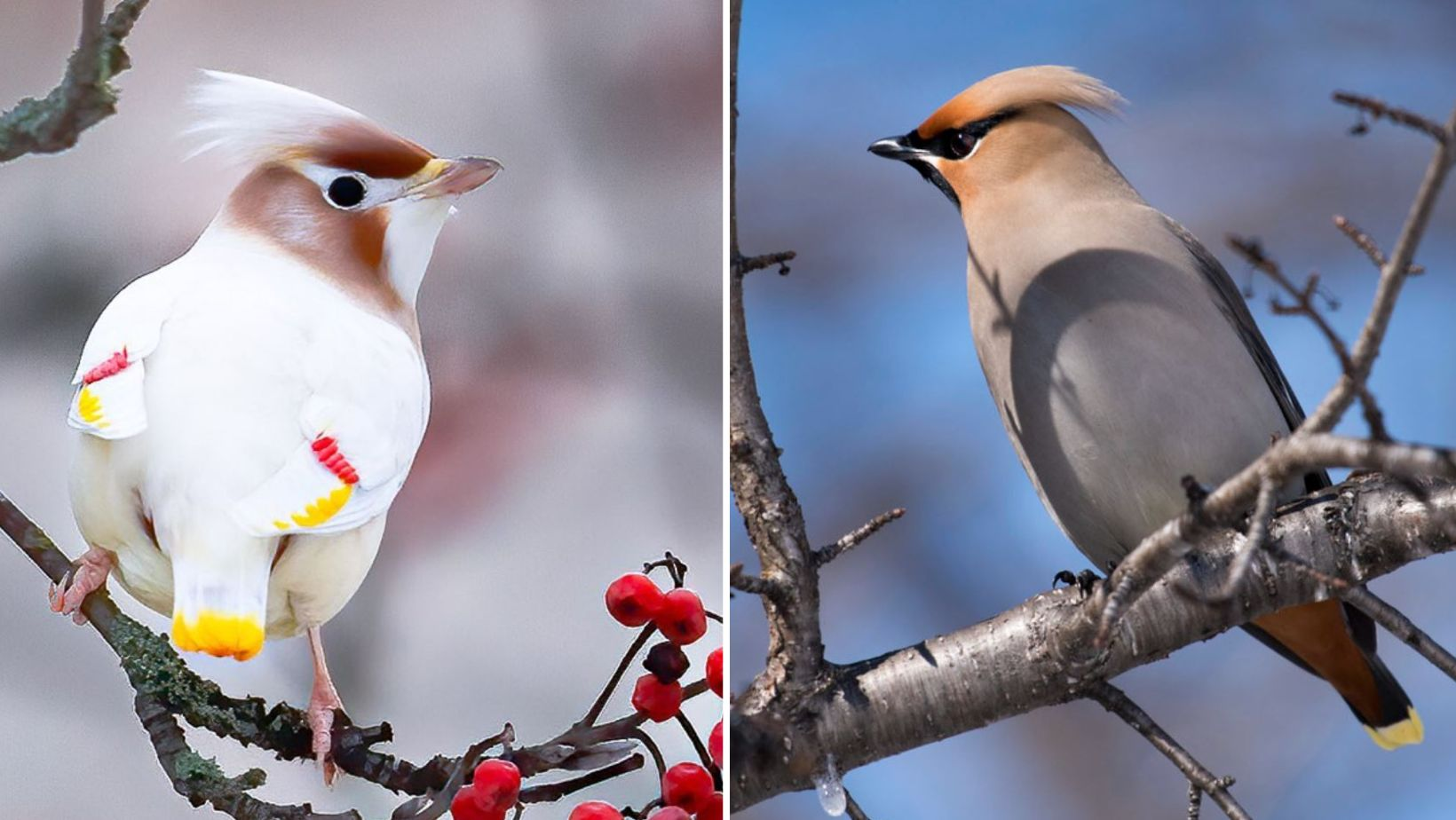
Introducing the free-spirited Bohemian waxwing! This bird is one of a kind with its unique appearance and behavior. Let’s take a closer look at what makes this feathered friend so special.
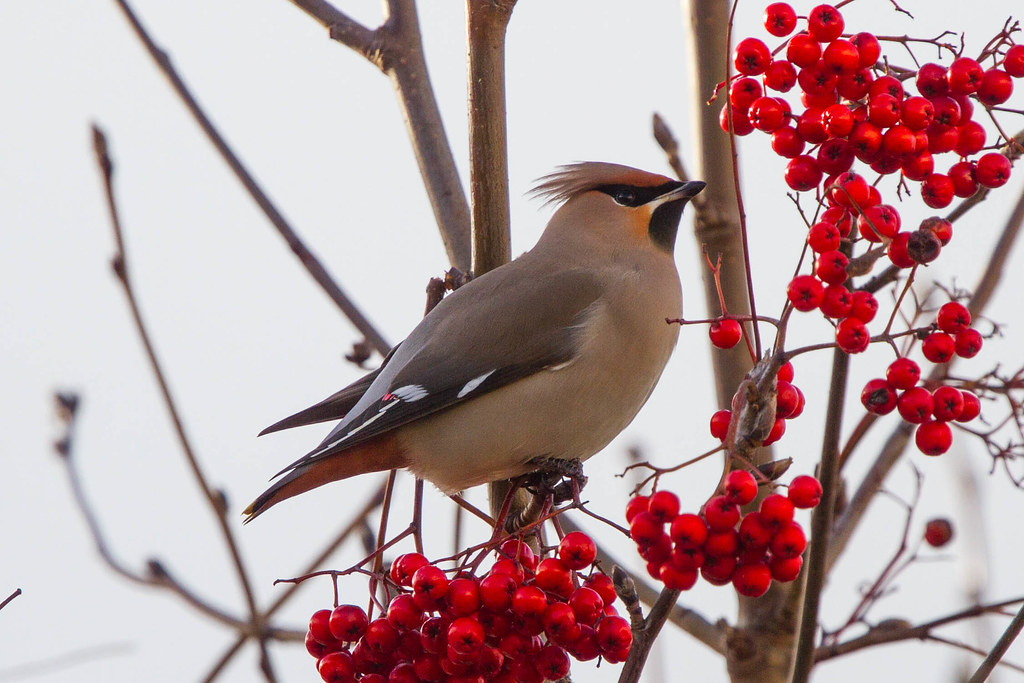
The Bohemian waxwing is a unique bird, known for its distinctive wing pattern on the secondary flight feathers, which feature flattened red tips. The males have brownish-grey plumage with a pale grey rump and underparts, and striking chestnut-orange under tail coverts. Their flight feathers are blackish with yellow edges on the outer webs, while the primary covers and secondary coverts show broad white tips. The secondaries also have long, flattened red tips that resemble wax. The tail is blackish with a bright yellow terminal band, and the head and crown are shaded from cinnamon to warm tawny. A black mask runs from the base of the bill through the eye and round to the rear of the head, complemented by a prominent backward-pointing crest. The chin and throat are black, and the bill is black with a pale base. The bird’s eyes are dark brown, and legs and feet are dark grey to black.
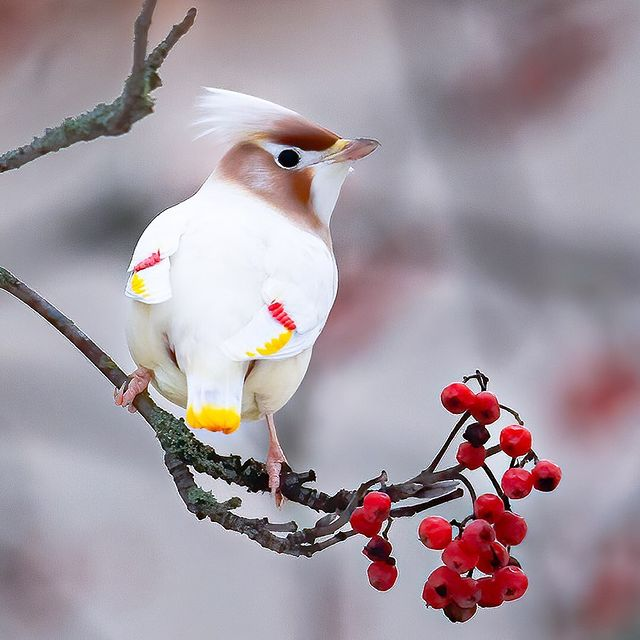
The female bird bears a striking resemblance to the male bird, but can be differentiated by her narrow yellow band at the end of her body. Additionally, her throat lacks clear definition along the bottom edge. In the leucistic form, the red and yellow colors stand out even more against the bird’s pure white feathers.
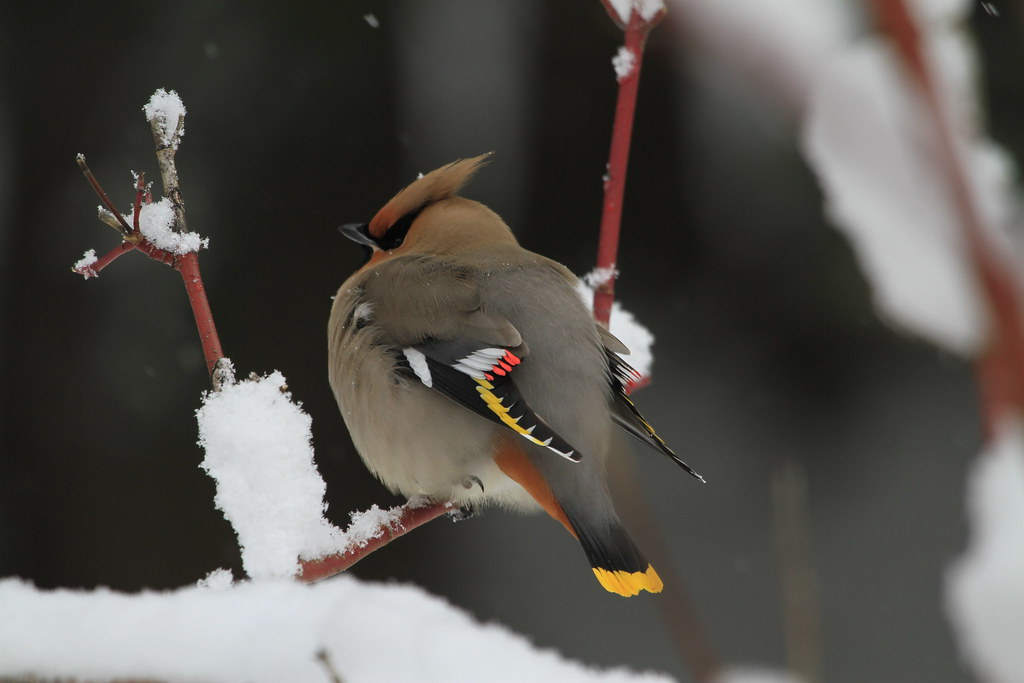
These feathered creatures are commonly seen dwelling in the woodlands in the northern regions of Palearctic and North America.
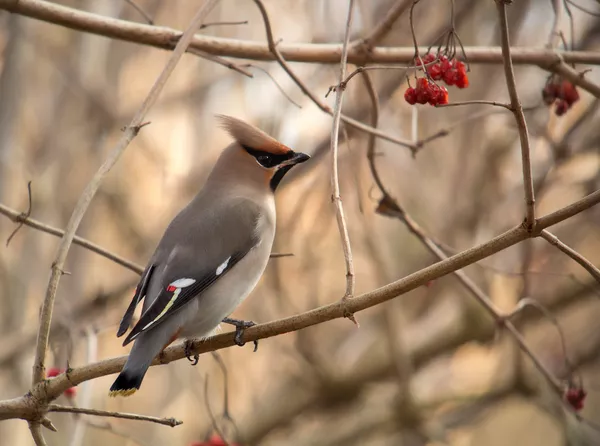
The Bohemian Waxwing prefers to breed in the northern coniferous forests, particularly in open areas or near forest edges, rivers, and dense growth or fruiting trees and bushes. Meanwhile, it frequents various habitats with scattered trees and fruiting plants during winter, such as gardens, farmland, roadsides, and deciduous forest edges.
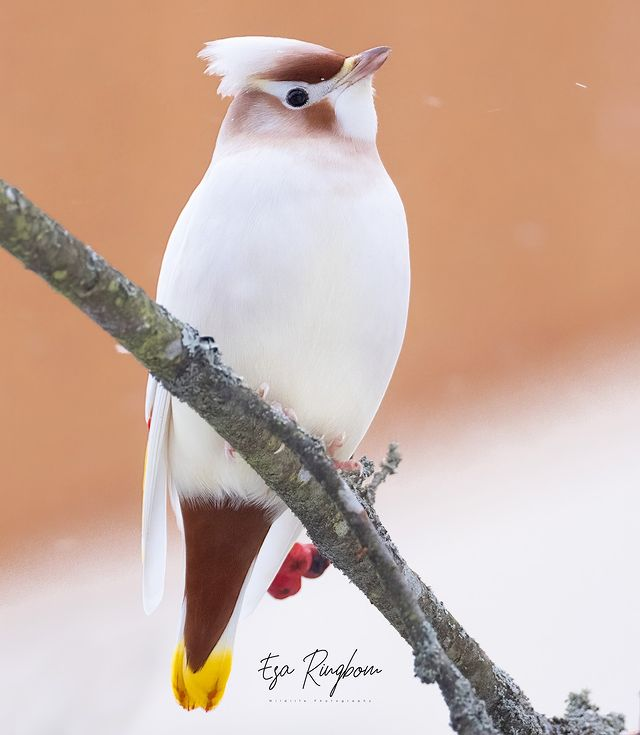
The primary source of sustenance for this avian creature is fruit, although it occasionally consumes insects, especially when breeding. In addition, it may also snack on buds, flowers, tree sap, shoots, leaves, moss, and lichens. Occasionally, the bird will supplement its diet with snails and spiders.
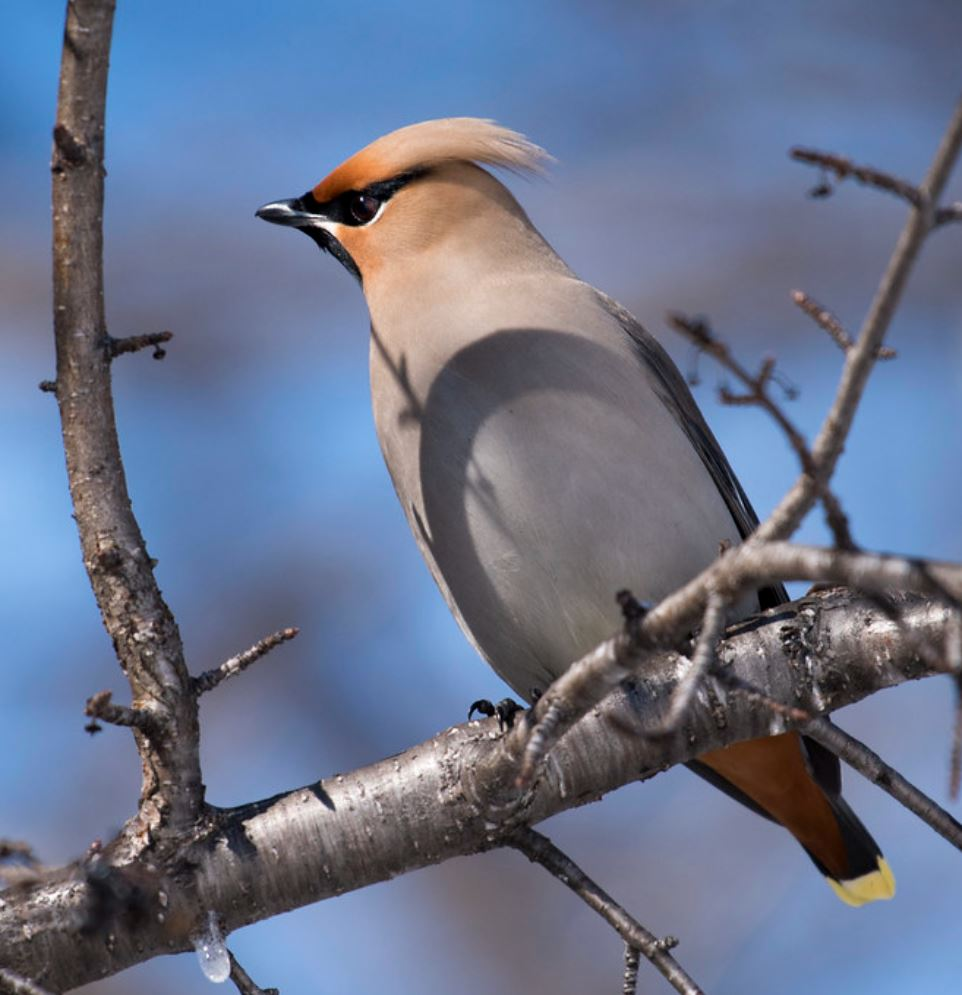
Typically, the breeding season involves the construction of a nest in a tall pine tree, yet where the birds ultimately settle for feeding purposes plays a crucial role in deciding its location. Sometimes, a single bird or pair may have multiple nests in the same area. The nests are about 15cm to 18cm in diameter and contain fine grass, moss, and down as lining. Generally, these nests hold roughly 4 to 6 eggs with pale bluish eggshells that are covered in blackish spots and some dark, uneven lines. The incubation period lasts approximately 14 days, and the young ones usually leave the nest around 13 to 15 days after hatching.
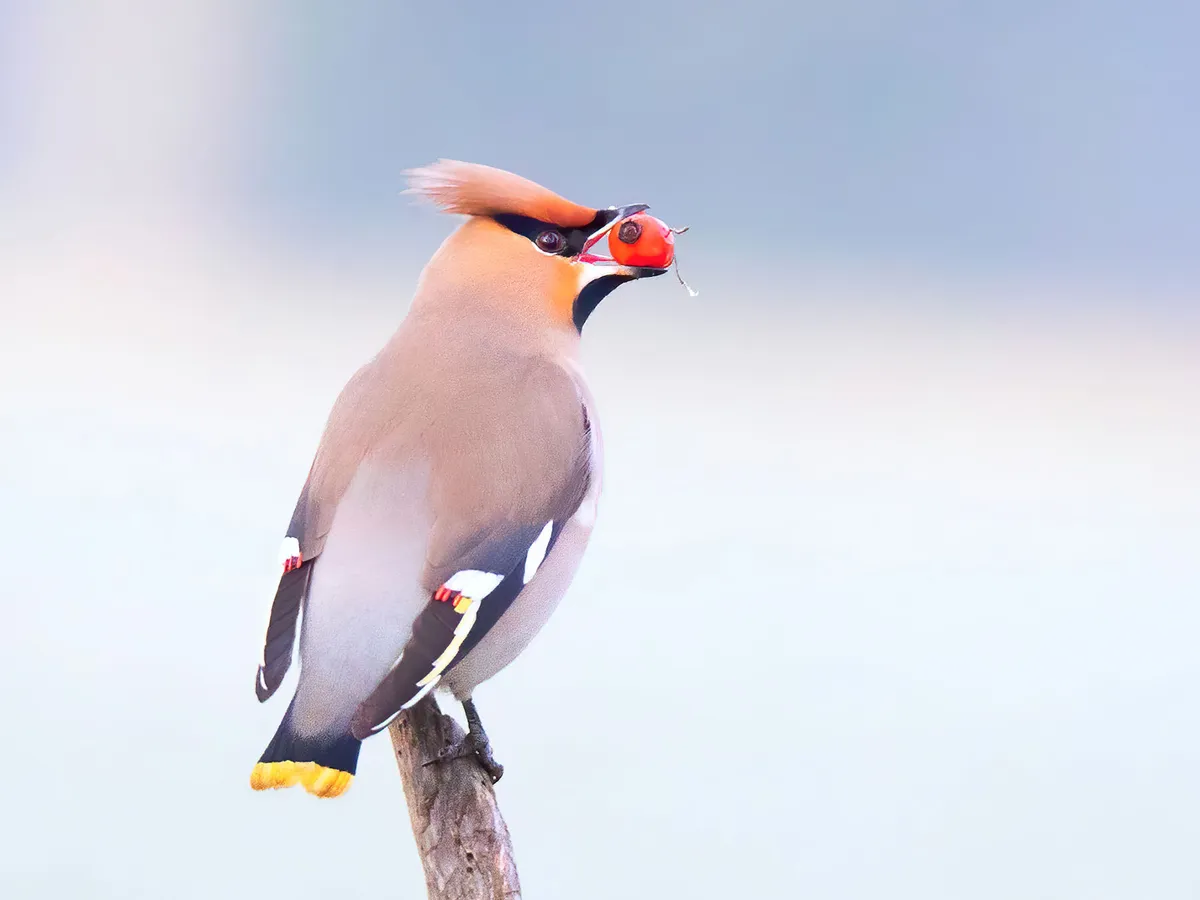
The Bohemian Waxwing is a commonly found bird species with steady populations and has even experienced some growth in recent times. They are not under threat at the moment.
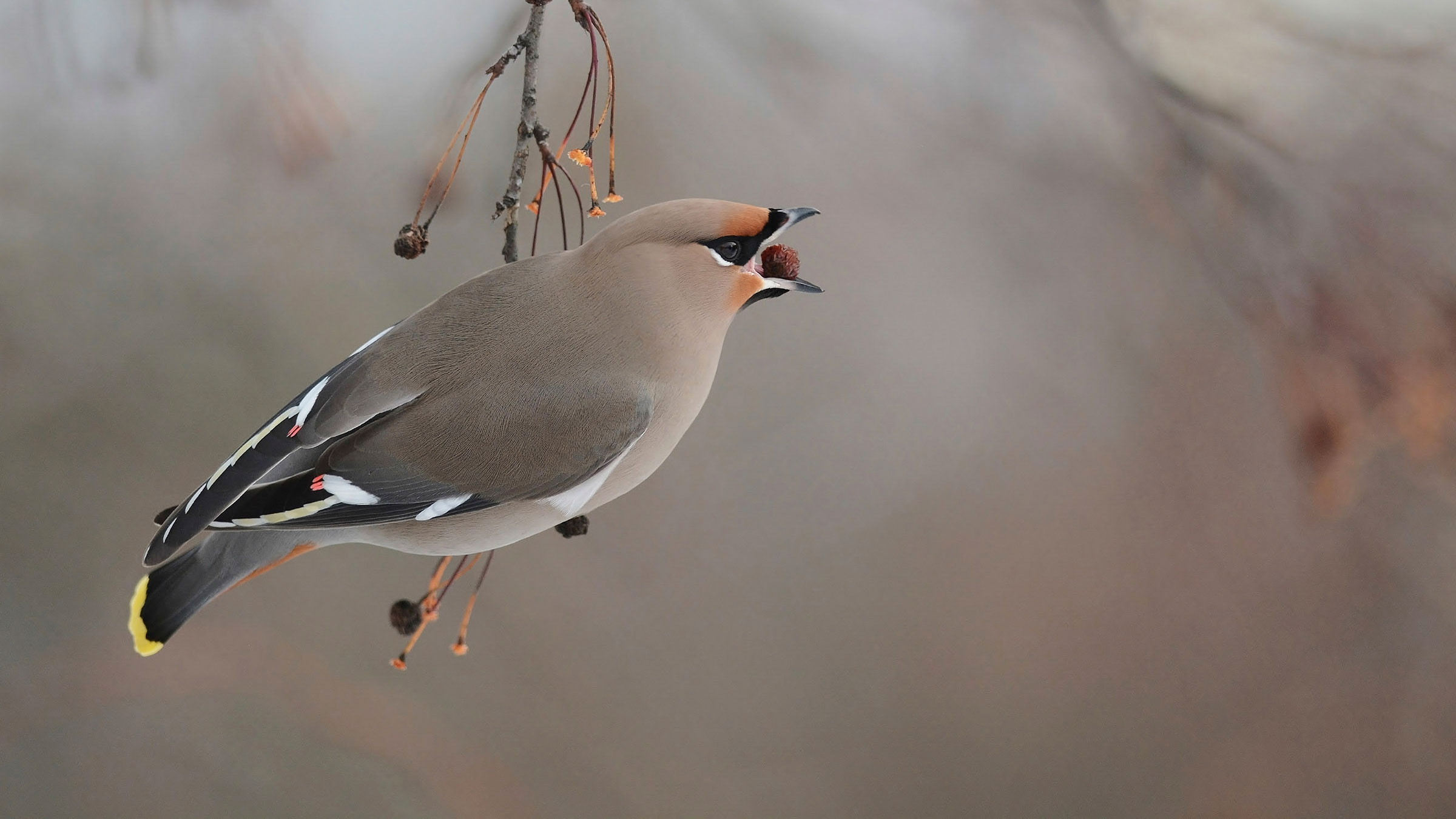
The video below showcases a bird that you can observe.
